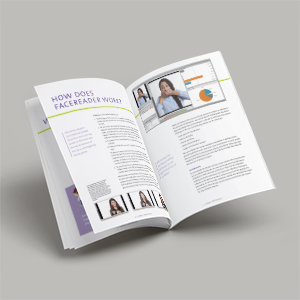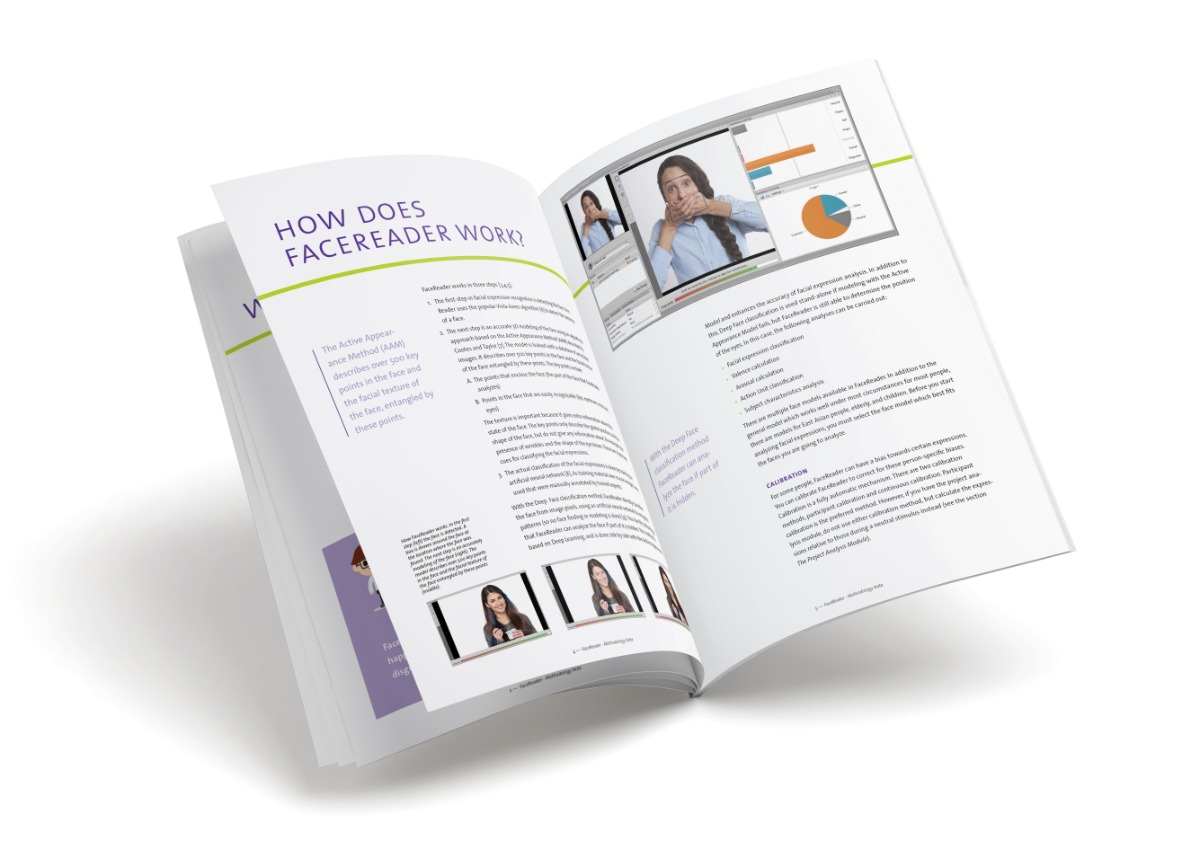
How to use FaceReader in the lab
By Marret K. Noordewier, PhD – Leiden University
Many researchers have turned towards using automated facial expression analysis software to help them with getting objective assessments of emotions. FaceReader is a well-established tool for the automation and analysis of facial expressions.
Are you interested in using automatic facial expression analysis with FaceReader software in a standardized lab setting? Here are some tips to consider in addition to Leanne Loijens’ tips to optimize facial expression analyses.

How to use FaceReader in the lab
With these five tips you are ensured to optimize your facial expression analysis during your lab research.
1. Position the camera below the computer screen
It is important to record participants’ faces from the front as much as possible (see also Loijens’ tip 2). When participants are in front of a computer screen, the facial expression coding works better when you place the camera below the computer screen instead of on top of the screen (i.e., record slightly from below instead of from above).
2. Record the entire face
To make sure participants’ entire face is visible on the video (see also Loijens’ tips 1 and 2), establish an optimal seating distance to the camera that allows you to record participants with different heights from top to chin. We use stickers on the floor to indicate the optimal position of the chair and ask participants to stay seated against the back of the chair throughout the study.
3. Avoid participants looking down
You want to avoid that participants look down to check the computer keyboard as this may result in coding errors. Where possible, use response keys that are easy to use (e.g., colored stickers on keyboard keys where participants can keep their fingers on without looking down). In addition, it helps to do some practice trials to familiarize participants with the way they are supposed to respond.
4. Make recordings comparable between participants and conditions
To be able to compare expression between participants or conditions, it is often useful that videos are equally long for different participants. To this end, we program critical elements of the study to proceed automatically instead of allowing participants to self-pace. With the use of event markers, it is possible to identify the critical moments in the data or, if necessary, cut the videos from there.
5. Make the study engaging
The lab is typically not a very natural or social environment (see also Loijens’ tip 3). This may lower the chance that participants show intense expressions. A way to address this is to make studies as engaging as possible. Use, for instance, self-relevant stimulus material or, if possible, create a social interaction (e.g., with a webcam).

Want to read more about using FaceReader in the lab or in your research?
Get the latest blog posts delivered to your inbox - every 15th of the month
more

How do people with Parkinson's disease express emotions?
A mask-like facial expression is an early symptom of Parkinson's disease. How can we understand the relation between changed facial expressions and disease severity? Researcher Yang and their team used FaceReader to find out.
Using Baby FaceReader for automated analysis of infant emotions
What if you had a way to understand a baby's unspoken needs? Analyzing facial expressions in infants helps researchers and caregivers understand more about the early development of emotions and social interactions.

